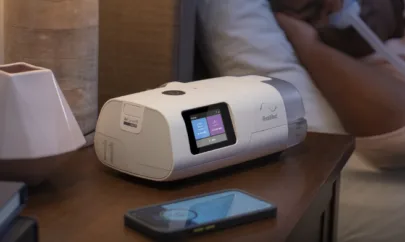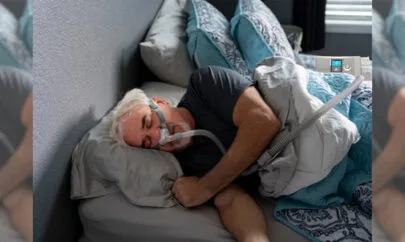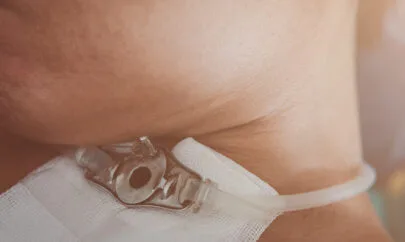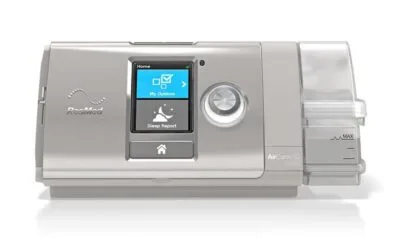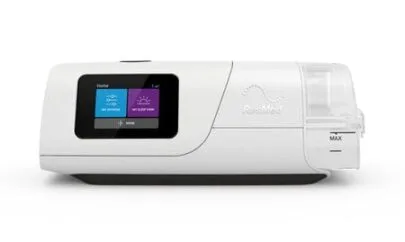
BIPAP Ventilation: Managing Gastric Distention and Improving Comfort
BiPAP (Bilevel Positive Airway Pressure) therapy effectively manages respiratory conditions such as obstructive sleep apnea, central sleep apnea, and chronic obstructive pulmonary disease (COPD). A BiPAP machine delivers air pressure to the lungs through a mask or nasal plug to help keep the airways open, increase oxygen levels, and reduce carbon dioxide levels during sleep. It provides two distinct air pressure levels: higher and lower pressure during exhalation.
Although it is highly beneficial, BiPAP therapy can cause complications such as mild gastric distention. Gastric distention is the inflation of the stomach with air, often resulting from the air pressure in the lungs being misdirected into the stomach. This can be uncomfortable and require prompt attention. Knowing how to prevent gastric distention can help ensure the comfort and safety of patients using BiPAP machines.
Understanding Gastric Distention in BIPAP Users
What is Gastric Distention?
Gastric distention is the stomach enlargement caused by excess air, fluid or food. It can be quite uncomfortable and may lead to several symptoms, including abdominal pain, nausea and vomiting. In severe cases, gastric distention can lead to complications such as gastric wall ischemia and even perforation, which are medical emergencies requiring immediate attention.
Why Does It Happen with BIPAP?
BiPAP therapy can cause gastric distention for many different reasons. One of the main issues is the possibility of air entering the stomach instead of the lungs. This could be because the air pressure is too high or if the patient swallows excess air during inhalation.
When using a BiPAP machine, the positive airway pressure treatment can sometimes cause the lower esophageal sphincter to relax, allowing air to pass into the stomach. It is most likely to occur in patients with pre-existing gastrointestinal issues or when the BiPAP ventilation setting is too high for the patient’s needs.
Factors such as the type of mask used, its fit, and the patient’s position during sleep can also influence the likelihood of gastric distention. If the mask does not fit properly, there may be air leaks, which cause the patient to swallow air, contributing to gastric distention.
Preventive Strategies for Gastric Distention
Preventing gastric distention when using a BiPAP machine involves several key strategies.
Proper Mask Fitting
It is essential to have a mask that fits correctly for maximum therapeutic effect and to prevent complications such as gastric distention. If the mask is too tight or too loose there can be air leaks. This can cause the patient to swallow excess air and result in gastric distention. Correcting mask fit and using additional supports, such as chin straps, can help to optimize positive pressure ventilation in the BiPAP mode of ventilation.
Optimal Machine Settings
Adjusting the BiPAP machine settings is another effective way to reduce gastric distention. Lowering peak inspiratory pressures may be necessary to reduce the air pressure in the lungs during inhalation. This will boost the effect of positive airway pressure treatment while reducing the risk of gastric distention. Consulting with a healthcare provider ensures machine settings are optimized for optimal therapeutic effect while preventing gastric bloating.
Correct Sleeping Positions
Sleeping positions can also impact the risk of gastric distention. Sleeping upright or using pillows to elevate the head can reduce the likelihood of air entering the stomach. This position can also alleviate symptoms of gastric reflux and make breathing more comfortable.
Controlling Gastric Distention
If gastric distention occurs despite preventive measures, it is important to know how to manage and relieve it effectively.
Immediate Relief Measures
Many methods can give you immediate relief. This includes:
- Adjusting Ventilator Settings: Reducing the peak inspiratory pressures (IPAP) and adjusting the inspiratory to expiratory flow rate can help in reducing the amount of air entering the stomach.
- Physical Maneuvers: Gentle abdominal massage, such as the “I LOV U” technique, can help stimulate gas to move downward and out of the body. This involves making circular massage movements on the abdominal area in the shape of the letters I, L, U, and O, following the direction of bowel movements.
- Home Remedies: Drinking warm water with ground herbs like ginger, fennel, or caraway seeds, or using baking soda (in moderation) can help release trapped gas. Apple cider vinegar dissolved in water is another traditional remedy that may provide quick relief.
Long-Term Solutions
If symptoms persist, then there are specific long-term solutions to consider:
- Medications: Certain medications, such as domperidone, can reduce the symptoms of gastric distention associated with noninvasive ventilation.
- Ventilator Device Changes: Changing the ventilator device can sometimes resolve the issue. Different devices may have varying peak pressures at the same flow volume, and finding the right device can help minimize gastric distention.
- Alternating Ventilatory Modalities: Switching between different ventilatory modalities, such as pressure to volume-controlled ventilation, can reduce the amount of air swallowed and the risk of gastric distention.
- Patient Education: Over time, patients may learn to handle and eliminate intestinal gas more effectively, which can lead to a spontaneous reduction in gastric distention symptoms. Regular clinical examinations and patient education on managing gas can be beneficial in the long term.
Talk to Your Doctor
Managing gastric distention in BiPAP users is essential for optimal therapeutic effect, overall health, and well-being. Gastric distention can be very uncomfortable, and if left untreated, it can become quite serious.
Certain factors must be considered to help reduce the risk of developing gastric conditions with BiPAP. This includes having a mask that fits correctly to prevent air leaks. The BiPAP machine should be set appropriately to minimize peak inspiratory pressures and reduce the swallowing of excess air. Certain sleeping positions can also help prevent gastrointestinal issues for example sleeping in an upright position or keeping the head elevated.
If preventative measures do not work, other solutions may need to be investigated. This includes adjusting ventilator settings and considering long-term strategies such as medication and alternative ventilatory approaches.
Patients undergoing BiPAP therapy can improve their comfort and overall quality of life by understanding how to reduce gastric distention during ventilation and collaborating with healthcare providers.





